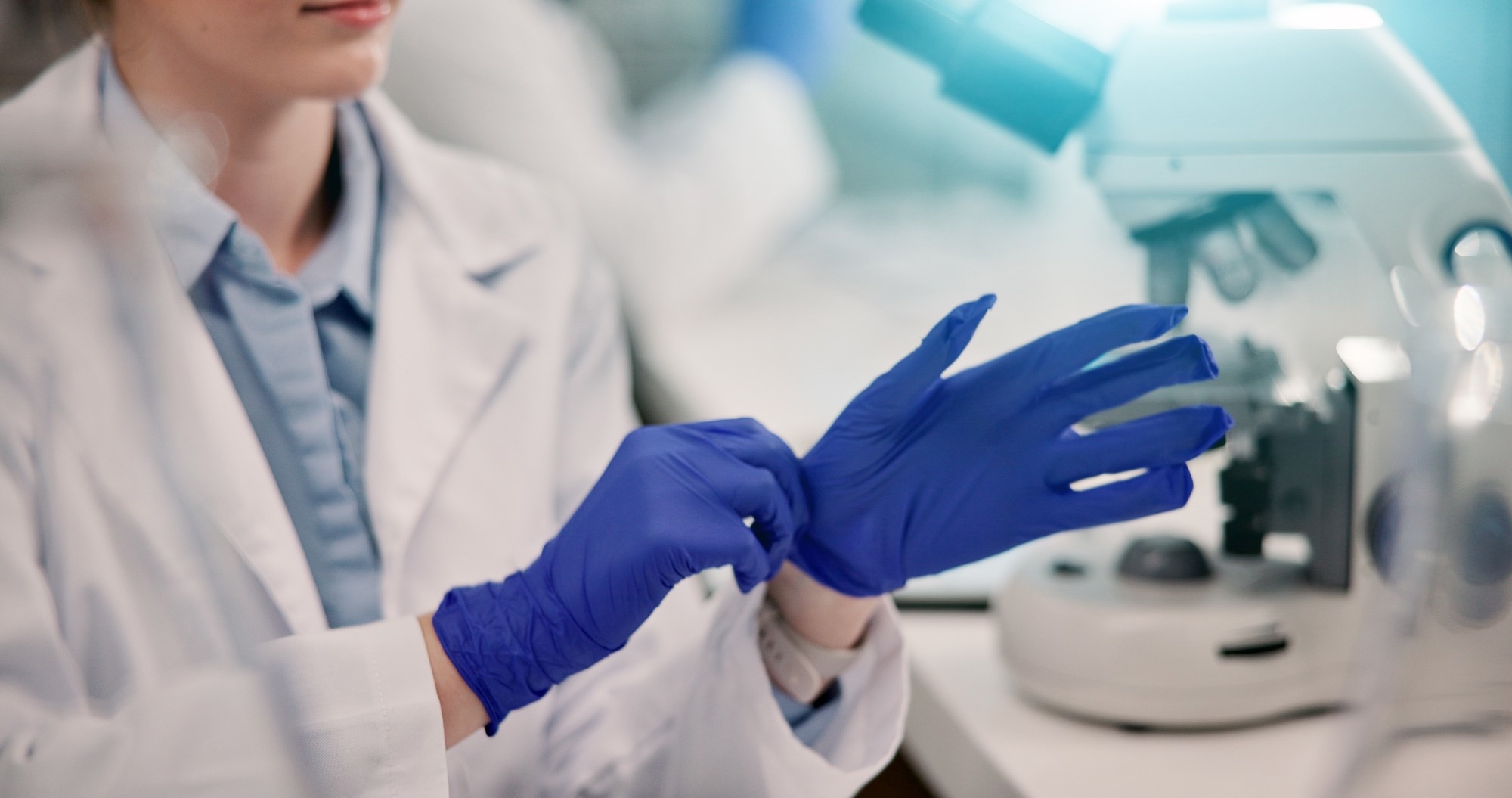 By Owais AliReviewed by Lexie CornerJun 11 2025
By Owais AliReviewed by Lexie CornerJun 11 2025Cobalt nanoparticle-decorated carbon materials are hybrid catalysts that combine the catalytic activity of cobalt with the structure and conductivity of carbon supports.
These materials offer improved reaction kinetics, strong durability, and efficient catalytic performance in energy and environmental applications. They support the development of sustainable technologies.
 Image Credit: PeopleImages.com - Yuri A/Shutterstock.com
Image Credit: PeopleImages.com - Yuri A/Shutterstock.com
These composites consist of cobalt nanoparticles dispersed or anchored onto carbon-based supports such as graphene, carbon nanotubes, or porous carbon. The carbon matrix provides high surface area, mechanical stability, and electrical conductivity, while the cobalt nanoparticles act as active catalytic sites.
This combination boosts catalytic efficiency. It enhances electron transfer, improves access for reactants, and increases the number of active sites. As a result, these materials are highly effective in electrochemical and environmental catalytic processes.
Synthesis Methods of Cobalt Nanoparticle-Decorated Carbon Materials
Various strategies are used to synthesize cobalt nanoparticle-decorated carbon materials. The synthesis method, along with factors like precursor concentration, temperature, pH, and stabilizers, affects nanoparticle size, dispersion, and catalytic performance.
Chemical Reduction Methods
Chemical reduction is a common technique for making cobalt-decorated carbon materials. It involves reducing cobalt precursors such as cobalt acetate or cobalt chloride hexahydrate (CoCl₂·6H₂O) with sodium borohydride (NaBH₄). This takes place in the presence of stabilizers like oleic acid and solvents like ethanol under ambient conditions.
The reduction process enables size and distribution control of cobalt nanoparticles by adjusting reducing agent concentration, temperature, and reaction time.
By adjusting the reducing agent concentration, reaction temperature, and time, the size and distribution of cobalt nanoparticles can be controlled. For example, researchers have synthesized cobalt nanoparticles on multi-walled carbon nanotubes (MWCNTs) using CoCl₂·6H₂O with NaBH₄, and l-ascorbic acid at room temperature. The resulting particles measured 50–70 nm in diameter.
This method allows consistent production of materials with uniform properties.1,2
Electrospinning and Carbonization
Electrospinning coupled with carbonization offers a robust method for synthesizing integrated cobalt-carbon nanostructures. This technique involves electrospinning a polymer solution containing carbon and cobalt precursors, followed by pyrolysis.
During carbonization, a hydrogen reduction step converts cobalt oxides into metallic cobalt. This process produces carbon nanofibers with cobalt nanoparticles embedded in the matrix.
An advancement in this method includes making nitrogen-doped carbon nanofibers (Co/N–C NFs) with solid, macroporous structures. These are produced by electrospinning polyacrylonitrile and cobalt acetylacetonate, followed by carbonization. The result is a hierarchical structure with controlled porosity and uniform cobalt distribution, suitable for applications that require specific material properties.3,4
Thermal Decomposition
Thermal decomposition uses metal-organic precursors that break down at high temperatures to form cobalt nanoparticles on carbon supports.
For example, cobalt nanoparticles can be formed by decomposing cobalt formate dihydrate at 380 °C in nitrogen. This process does not need external reducing agents. The decomposition releases gases that help form the nanoparticles under controlled conditions.5
Download your PDF copy now!
Applications of Cobalt Nanoparticle-Decorated Carbon Materials
Energy Storage Systems: Lithium-Sulfur Batteries
Lithium-sulfur (Li–S) batteries encounter persistent challenges, including the intrinsically low electrical conductivity of sulfur and its discharge products, substantial volume expansion during cycling, and the polysulfide shuttle effect, which leads to rapid capacity degradation and limited cycling stability.
Cobalt–nitrogen-doped carbon materials have been extensively studied as multifunctional hosts to mitigate these issues. These materials provide physical confinement of lithium polysulfides and catalytically enhance their redox kinetics.6
A study reported that honeycomb-like Co@N–C composites, characterized by high surface areas and hierarchical architectures, effectively encapsulated large amounts of sulfur, achieving a sulfur content of 93.6 wt% and an areal loading of 7.5 mg cm⁻². These composites exhibited excellent rate performance up to 10 C and maintained prolonged cycling stability.
In addition, the Co–N–C coordination centers functioned as bifunctional electrocatalysts, simultaneously promoting the formation and decomposition of Li₂S, thereby enhancing redox kinetics and improving the overall electrochemical performance.7
Cobalt-decorated carbon structures have also been successfully applied as functional interlayers or separator coatings. These modifications improve polysulfide retention and catalytic conversion, enhancing electrochemical performance.
For example, in a study, Co–N–C polyhedra encapsulating selenium–sulfur (SeS₂) compounds demonstrated uniform active material dispersion and high loading, delivering high reversible capacities with long cycle life and near 100 % Coulombic efficiency, surpassing conventional composites.8
Electrocatalysis: Oxygen Reduction Reactions
The oxygen reduction reaction (ORR) represents a major kinetic bottleneck in fuel cells and metal-air batteries, restricting their commercial viability due to slow electron transfer rates and high overpotentials. Although platinum-based catalysts are preferred for their high activity, their widespread use is constrained by limited availability, high cost, and insufficient durability during prolonged operation.
Cobalt nanoparticle-decorated carbon materials have emerged as providing cost-effective alternatives. These hybrid materials demonstrate enhanced ORR efficiency, particularly in alkaline media, through synergistic interactions between cobalt species and heteroatom-doped carbon matrices. Their structural tunability and chemical stability under operating conditions make them suitable for long-term electrochemical applications.
Nitrogen-doped carbon matrices further improve their catalytic performance, as nitrogen heteroatoms introduce electron-rich sites that facilitate oxygen adsorption and activation. The uniformly dispersed cobalt nanoparticles facilitate efficient O–O bond cleavage and accelerate electron transfer during oxygen reduction. These synergistic effects enhance reaction kinetics, electron conductivity, and catalytic surface area.9,10
Environmental Applications: Ozone Decomposition
Ozone is widely utilized for its strong oxidative, antibacterial, and antiviral properties in applications, including water purification, medical treatments, and industrial gas decontamination.
However, ozone in the troposphere poses significant health risks when concentrations exceed 0.1 mg·m⁻³, causing respiratory and other physiological damage. Therefore, mitigation of residual ozone, especially in enclosed or polluted environments, requires the development of effective and stable catalytic materials.11
Cobalt nanoparticle-decorated carbon materials have shown considerable potential for catalytic ozone decomposition. A New Journal of Chemistry study reported catalysts derived from pyrolyzed zeolitic imidazolate framework-67 (ZIF-67) exhibiting promising catalytic activity under high-humidity conditions—a critical limitation for conventional catalysts.
These materials comprise metallic cobalt nanoparticles embedded within hydrophobic nitrogen-doped carbon supports, structurally and chemically optimized to maintain high performance at relative humidity levels up to 90 %. After six hours of continuous exposure, the catalyst achieved approximately 99 % ozone conversion.
Their catalytic mechanism involves surface-oxidized cobalt species and the hydrophobic carbon matrix (water contact angle = 129°), which collectively enhance stability under humid conditions.
In addition, these materials outperformed conventional catalysts such as OMS-2 and activated carbon, demonstrating the distinct advantages of cobalt nanoparticle decoration on carbon matrices for environmental applications.12
Challenges in Scalability and Sustainable Production
Ethical and Resource Supply Constraints
Cobalt, a critical element in nanoparticle-decorated carbon materials, is predominantly sourced from the Democratic Republic of Congo, where artisanal mining is common. These practices are often linked to occupational safety risks and environmental concerns.
This geographic concentration of supply introduces ethical concerns and increases vulnerability to geopolitical instability, affecting the long-term sustainability and traceability of cobalt sourcing.
Environmental Burden of Conventional Synthesis
Common cobalt nanoparticle synthesis methods, such as thermal decomposition and chemical reduction, involve toxic solvents, hazardous reagents, and high temperatures. These factors increase energy use and produce harmful byproducts, undermining the environmental sustainability of cobalt nanomaterials, especially for remediation applications.
Technical Barriers to Industrial Scale-Up
Scaling cobalt nanoparticle composite synthesis from laboratory to industrial production presents significant challenges. Maintaining uniform particle size, controlled dispersion, and consistent morphology is complicated by temperature gradients, uneven mixing, and variable precursor feed rates in large reactors.
These factors lead to heterogeneous materials, adversely affecting catalytic performance and product reliability.
Structural Challenges in Carbon Substrates
The carbon matrices supporting cobalt nanoparticles, such as graphene, carbon nanotubes (CNTs), and activated carbon, often require energy-intensive synthesis using non-renewable feedstocks and hazardous chemicals.
Therefore, consistent control over critical structural features, such as chirality and pore distribution, is difficult to maintain at scale. This reduces reproducibility and compromises the overall sustainability of the catalyst.
Heat and Mass Transfer Limitations
In large-scale reactors, uneven heat and mass transfer create localized temperature and concentration gradients, disrupting uniform cobalt nanoparticle formation. These non-uniformities cause uncontrolled agglomeration and inconsistent nanoparticle distribution on carbon supports.
Such variations compromise catalytic efficiency and structural integrity, limiting the commercial viability of these materials for environmental and energy applications.13-16
Despite these challenges, ongoing research in green synthesis and supply chain optimization is progressing these materials toward widespread adoption.
For more on sustainable nanomaterials and catalytic innovations, explore:
References and Further Reading
- Khusnuriyalova, A. F., Caporali, M., Hey‐Hawkins, E., Sinyashin, O. G., & Yakhvarov, D. G. (2021). Preparation of cobalt nanoparticles. European Journal of Inorganic Chemistry, 2021(30), 3023-3047. https://doi.org/10.1002/ejic.202100367
- Zola, A. S., Ribeiro, R. U., Bueno, J. M. C., Zanchet, D., & Arroyo, P. A. (2014). Cobalt nanoparticles prepared by three different methods. Journal of Experimental Nanoscience, 9(4), 398-405. https://doi.org/10.1080/17458080.2012.662723
- Singhal, R., & Kalra, V. (2016). Cobalt nanoparticle‐embedded porous carbon nanofibers with inherent N‐and F‐doping as binder‐free bifunctional catalysts for oxygen reduction and evolution reactions. ChemPhysChem, 18(2), 223-229. https://doi.org/10.1002/cphc.201600771
- Liu, H., Li, Y., Yuan, M., Sun, G., Li, H., Ma, S., Liao, Q., & Zhang, Y. (2018). In Situ Preparation of Cobalt Nanoparticles Decorated in N-Doped Carbon Nanofibers as Excellent Electromagnetic Wave Absorbers. ACS applied materials & interfaces, 10(26), 22591–22601. https://doi.org/10.1021/acsami.8b05211
- Eshraghi, A., Mirzaei, A. A., Rahimi, R., & Atashi, H. (2021). A simple and low cost method for the synthesis of metallic cobalt nanoparticles without further reduction as an effective catalyst for Fischer–Tropsch Synthesis. Reaction Kinetics, Mechanisms and Catalysis, 134(1), 127–141. https://doi.org/10.1007/s11144-021-02046-0
- Gu, X., Deng, L., & Ren, X. (2021). Metal Atom-Decorated Carbon Nanomaterials for Enhancing Li-S/Se Batteries Performances: A Mini Review. Frontiers in Energy Research, 9, 626596. https://doi.org/10.3389/fenrg.2021.626596
- Li, Y., Fan, J., Zhang, J., Yang, J., Yuan, R., Chang, J., Zheng, M., & Dong, Q. (2017). A Honeycomb-like Co@N-C Composite for Ultrahigh Sulfur Loading Li-S Batteries. ACS nano, 11(11), 11417–11424. https://doi.org/10.1021/acsnano.7b06061
- He, J., Weiqiang Lv, Chen, Y., Xiong, J., Wen, K., Xu, C., Zhang, W., Li, Y., Qin, W., & He, W. (2018). Direct impregnation of SeS2 into a MOF-derived 3D nanoporous Co–N–C architecture towards superior rechargeable lithium batteries. Journal of Materials Chemistry A, 6(22), 10466–10473. https://doi.org/10.1039/c8ta02434k
- Xue, H., Wang, T., Gong, H., Guo, H., Fan, X., Song, L., Xia, W., Feng, Y., & He, J. (2017). Co3O4 Nanoparticle-Decorated N-Doped Mesoporous Carbon Nanofibers as an Efficient Catalyst for Oxygen Reduction Reaction. Catalysts, 7(6), 189. https://doi.org/10.3390/catal7060189
- Kim, I. T., Song, M. J., & Shin, M. W. (2016). Cobalt-Based Nanoparticles Decorating Carbon Nanofibers Films As Highly Efficient Electrocatalysts for Oxygen Reduction. Meeting Abstracts/Meeting Abstracts (Electrochemical Society. CD-ROM), MA2016-02(5), 762–762. https://doi.org/10.1149/ma2016-02/5/762
- Batakliev, T., Georgiev, V., Anachkov, M., Rakovsky, S., & Zaikov, G. E. (2014). Ozone decomposition. Interdisciplinary toxicology, 7(2), 47–59. https://doi.org/10.2478/intox-2014-0008
- Li, D., Cen, B., Fang, C., Leng, X., Wang, W., Wang, Y., Chen, J., & Luo, M. (2020). High performance cobalt nanoparticle catalysts supported by carbon for ozone decomposition: the effects of the cobalt particle size and hydrophobic carbon support. New Journal of Chemistry, 45(2), 561–568. https://doi.org/10.1039/d0nj04876c
- Amit Katwala. (2018). The spiralling environmental cost of our lithium battery addiction. WIRED. https://www.wired.com/story/lithium-batteries-environment-impact/
- Ma, Y., Lin, W., Ruan, Y., Lu, H., Fan, S., Chen, D., Huang, Y., Zhang, T., Pi, J., & Xu, J. F. (2022). Advances of Cobalt Nanomaterials as Anti-Infection Agents, Drug Carriers, and Immunomodulators for Potential Infectious Disease Treatment. Pharmaceutics, 14(11), 2351. https://doi.org/10.3390/pharmaceutics14112351
- Goswami, A. D., Trivedi, D. H., Jadhav, N. L., & Pinjari, D. V. (2021). Sustainable and green synthesis of carbon nanomaterials: A review. Journal of Environmental Chemical Engineering, 9(5), 106118. https://doi.org/10.1016/j.jece.2021.106118
- Hughes, K. J., Iyer, K. A., Bird, R. E., Ivanov, J., Banerjee, S., Georges, G., & Zhou, Q. A. (2024). Review of Carbon Nanotube Research and Development: Materials and Emerging Applications. ACS Applied Nano Materials, 7(16), 18695–18713. https://doi.org/10.1021/acsanm.4c02721
Disclaimer: The views expressed here are those of the author expressed in their private capacity and do not necessarily represent the views of AZoM.com Limited T/A AZoNetwork the owner and operator of this website. This disclaimer forms part of the Terms and conditions of use of this website.